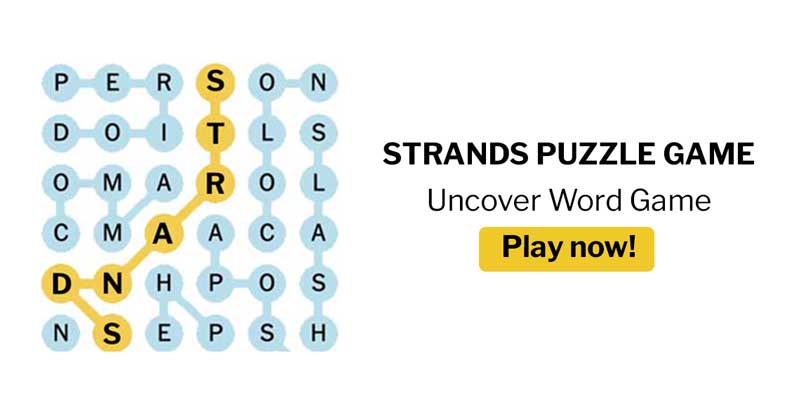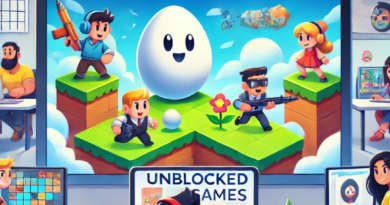Strands Hint : A Guide to Unraveling Word Puzzles with Ease
Introduction
Word games and puzzles are extra popular than ever, with each day challenges like Wordle, Connections, and Spelling Bee shooting the hobby of mystery enthusiasts global. However, there’s any other hidden gem inside the international of phrase puzzles that’s gaining traction: Strands. Strands Hint offers a unique spin on conventional phrase puzzles by means of specializing in “hints,” or clues that help players connect exceptional phrases or terms. Understanding how to interpret these tips is important to fixing the puzzle. This guide will assist you liberate the potential of Strands tips, sprucing your puzzle-solving talents and boosting your capability to assume creatively.
What is Strands Hint?
Strands is a word sport that challenges players to pick out relationships among phrases, concepts, or categories based totally on a set of furnished guidelines. The recreation’s objective is straightforward in idea however complex in execution: players must use tips to decipher the underlying connections that tie together seemingly unrelated words. Unlike games that rely merely on vocabulary expertise, Strands demanding situations gamers to draw on their broader know-how of relationships, associations, and diffused meanings. The end result is a recreation that encourages lateral thinking and rewards creativity.
The Strands guidelines function the backbone of the game, supplying clues that manual gamers closer to the connections they want to make.To excel in Strands, it’s essential to understand these hints and the strategies for interpreting them effectively.
Before diving into strategies, let’s explore the various types of hints commonly encountered in Strands:
Types of Strands Hint
1.Synonym-Based Hints: These hints involve words with similar meanings. For example, if the hints are “giggle,” “chuckle,” and “smile,” the underlying connection could be laughter or humor.
- Antonym-Based Hints: These hints include words with opposite meanings. If the hints are “day” and “night,” the connection could be opposites or time periods.
- Thematic Hints: The words are related to a common theme. For instance, if the hints are “apple,” “banana,” and “orange,” the connection might be fruits.
- Phonetic or Rhyme Hints: Sometimes, hints are connected by sound.Words like “ball,” “tall,” and “fall” would be related by means of rhyme, even if they don’t have a conceptual connection.
- Wordplay-Based Hints: These recommendations require players to recall puns, homophones, or different wordplay factors.For example, “write” and “right” could be related by sound, although their meanings are different.
- Cultural or Popular References: Hints can also reference cultural knowledge, such as famous characters, movies, or songs. For instance, if the hints are “Romeo,” “Juliet,” and “love,” they’re possibly connected to Shakespeare’s well-known play.
Strategies for Deciphering Strands Hint
Now that we’ve identified the types of hints, let’s discuss effective strategies to decode them:
- Identify the Type of Connection
The first step to solving a Strands puzzle is identifying the type of hint you’re working with. Ask yourself questions like: Are these words synonyms? Do they belong to a similar theme? Or do they have similar sounds? By categorizing the hint type, you’ll be able to focus your thinking and identify potential connections faster. - Consider Broader Contexts
Some hints may seem unrelated initially because they are connected by a more abstract or indirect concept.For example, symbols such as “sky,” “water,” and “grass” may seem immediately unrelated, but all are evident in nature. Expanding your horizons and considering different contexts can help you make connections that may not be immediately obvious to you. - Leverage Your Knowledge of Themes and Categories
Many Strands puzzles rely on thematic connections, which are often based on categories like food, animals, sports, or famous places. When you see a set of hints, try to mentally categorize them. Grouping hints into broad themes can make it easier to spot connections, even when the relationship between words isn’t immediately clear. - Use Word Association Techniques
If you’re struggling to make connections, practice word association. Start with one hint and list all the related words or concepts that come to mind. Then, move to the next hint and repeat the process. Often, these associations will reveal a common link that you can use to solve the puzzle. - Look for Patterns in Phonetics and Word Structure
Sometimes, the connection between hints lies in their sound or structure. Look for rhyming patterns, similar prefixes, or suffixes. Recognizing these linguistic patterns can be helpful in cases where the hints don’t share an obvious conceptual link. - Don’t Overthink—Go With Your Gut
While some Strands hints require complex analysis, others rely on straightforward connections. Don’t be afraid to go with your first instinct, as simple answers are often correct. If the hints seem to describe something obvious, trust your initial interpretation and test it before moving on to more elaborate guesses.
Common Pitfalls and How to Avoid Them
Solving Strands tips can be both interesting and frustrating, specifically when you encounter difficult guidelines. Here are a few common pitfalls and tips on heading off them:
- Over-Complicating Simple Hints: It’s clean to overthink recommendations and search for deep connections that aren’t there.Try to start with simple associations and expand only if the simpler connections don’t fit.
- Forgetting Cultural and Pop References: Remember that hints can include cultural or popular references. If the hints seem unfamiliar, consider whether they could be linked to a well-known movie, song, or character.
- Focusing Too Narrowly: Sometimes, hints can seem unrelated because they’re connected in an indirect way. Expand your thinking and be willing to consider abstract connections, especially when dealing with unusual hints.
- Ignoring Phonetic Clues: Don’t forget about the sounds of phrases. Phonetic clues permit you to locate connections among phrases that don’t appear related at the start glance.
Benefits of Playing Strands and Using Hint Effectively
Mastering Strands hints offers numerous cognitive benefits beyond simply enjoying the game.By practicing with those puzzles, gamers can decorate their problem-fixing skills, improve their vocabulary, and extend their capability to suppose laterally. The puzzle format additionally encourages gamers to draw on a wide range of information, making it both a mental exercising and an educational revel in.
Additionally, the system of solving Strands puzzles can sharpen your interest to element.As you learn to decipher subtle hints and connections, you’ll become more adept at noticing patterns, themes, and relationships in other areas of life, from language to general knowledge.
Conclusion: Making the Most of Strands Hint
Strands offers a completely unique and profitable puzzle enjoy that demanding situations gamers to suppose in new and innovative methods. By know-how and learning the distinctive forms of pointers, gamers can enhance their achievement charge and gain a deeper appreciation for the sport’s nuanced design. As you still practice, you’ll discover yourself higher prepared to address even the maximum challenging hints, making Strands a rewarding addition in your puzzle-fixing repertoire.
So, the next time you’re confronted with a Strands puzzle, keep in mind those strategies and method each hint with interest and an open thoughts.With practice, you’ll unlock the thrill of discovering hidden connections and conquering each puzzle one hint at a time.




